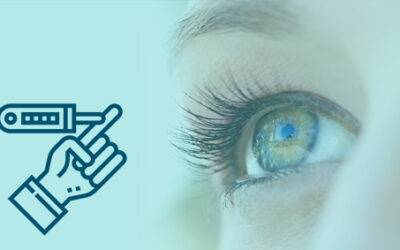Celebrate Deepawali Safely – Eye Safety Tips for a Bright and Injury-Free Festival

Celebrate Deepawali Safely – Eye Safety Tips for a Bright and Injury-Free Festival
D eepawali, the festival of lights, is a time of celebration and joy for millions of people in India and across the world. It’s a time when families come together, homes are adorned with colourful decorations, and delicious sweets are shared. One tradition that has long been associated with Deepawali is the use of firecrackers. While these fireworks add a dazzling display to the festivities, they also pose a significant threat to our eyes.Firecracker eye injuries can be a painful and devastating consequence of the excitement and festivities surrounding Deepawali. In this article, we will explore eye safety tips during Deepawali, the causes of firecracker eye injuries, the types of eye injuries that can occur, the firecrackers that are most likely to cause harm, the do’s and don’ts of lighting firecrackers, and the immediate steps to take in case of a firecracker-related eye injury. This information can help us celebrate the festival of lights responsibly and protect our precious vision.
Causes of Firecracker Eye Injuries
F irecrackers, an integral part of Deepawali celebrations, can pose significant risks to our eyes and vision if not handled properly. Firecracker eye injuries can occur for several reasons, and understanding why they happen can help us take preventive measures and adhere to safety guidelines. By doing so, we can enjoy the beauty of fireworks while ensuring that our eyes remain safe during the festivities.Factors that contribute to firecracker eye injuries include:
- Explosive force of fireworks – One of the main reasons for firecracker eye injuries is the high intensity and unpredictable nature of their explosions. When a firecracker detonates, it releases a burst of energy in the form of intense light, heat, and pressure. This burst of energy propels colourful sparks into the air as well as tiny fragments and particles that can travel at astonishing force and speed. If someone is too close to the explosion, their eyes can be exposed to this sudden release of energy and debris, leading to various types of eye injuries and damage.
- User negligence – Many firecracker-related eye injuries occur due to the negligence of those igniting the fireworks. In the midst of celebration, people may fail to handle firecrackers responsibly or overlook safety precautions, such as maintaining a safe distance or using protective eyewear. This lack of caution can result in unintended accidents. For example – Holding firecrackers too close to the face when lighting them can lead to severe eye damage if an explosion occurs in close proximity.
A lack of awareness regarding safety measures or the absence of parental supervision can also play a role in contributing to injuries. For example – Some children light firecrackers when holding them in their hand and this can be dangerous and cause injury to the eyes. - Firecracker malfunction – Sometimes, despite using good-quality crackers and following safety precautions, firecrackers may malfunction due to manufacturing defects or improper storage conditions, leading to unexpected explosions or erratic behaviour. This can catch users off-guard and increase the chances of eye injuries due to the sudden release of energy and projectile fragments.
- Reigniting or salvaging firecrackers – Some individuals may attempt to relight partially ignited firecrackers or recover firecrackers that have failed to explode. This is a highly risky and dangerous practice as reactivating a firecracker may lead to unexpected explosions and the ejection of debris that can result in eye injuries.
- Bystanders – Often, accidents occur when individuals in close proximity to firecracker explosions are not directly involved in handling or lighting them. The common practice of igniting firecrackers in the street is one reason why bystanders or passersby can sustain eye injuries. The forceful expulsion of debris or chemicals from a firecracker can strike people in the vicinity, especially if the fireworks malfunction or are mishandled.
- Use of homemade devices – Some people make use of homemade contraptions to enhance the sound effect of firecrackers. For example – Lighting crackers in coconut shells, empty cans or pipes can pose significant risks. These improvised methods may lack the safety features of commercial fireworks or fail to control the direction of the explosion, making them highly unpredictable and susceptible to malfunction. As a result, users and bystanders can be exposed to dangerous fragments or projectiles, increasing the likelihood of eye injuries.
Types of Eye Injuries Caused by Firecrackers
T he eyes are particularly vulnerable to damage from firecrackers because they are delicate and sensitive organs. The combination of explosive force and potential chemical exposure makes firecrackers a significant threat to eye safety. Firecrackers can cause a range of eye injuries, from minor irritations to severe and potentially permanent damage.Some common types of eye injuries associated with firecracker accidents include:
- Corneal abrasions – Flying debris or sparks from firecrackers can scratch the cornea, the clear front surface of the eye. Corneal abrasions can cause intense pain, redness, infections, and sensitivity to light. While minor corneal abrasions usually heal without permanent eye damage, larger abrasions can result in long-term vision problems if not treated properly.
- Chemical burns – Most firecrackers contain chemicals that make for the stunning array of colours and explosive displays when lit. However, if the eye is exposed to these chemicals, it can lead to chemical burns, corneal scarring, and ocular surface damage. Chemical burns from firecrackers can be extremely painful and lead to long-term and permanent vision problems such as cataract, glaucoma and even retinal toxicity.
- Thermal burns – Excessive heat generated by firecrackers that go off near the eye can cause thermal burns. These burns can affect the eyelids and ocular surface, and lead to scars, corneal damage, and dryness in the eyes.
- Foreign body injuries – Firecrackers, when mishandled or improperly lit, can project tiny fragments or small particles into the eye. This can cause irritation, pain, and potential damage to the delicate structures within the eye. Removing these foreign bodies can be a delicate process and may require professional medical attention.
- Blunt trauma – In severe cases, firecracker explosions can lead to blunt trauma injuries, including fractures of the eye socket, traumatic cataracts, or retinal detachments. These injuries often require immediate medical intervention.
- Eye irritation – Firecrackers contain several toxic and poisonous substances like magnesium, potassium nitrate, barium, cadmium, sulphur dioxide, and charcoal. The constant smoke and fumes generated by these chemicals can lead to eye irritation and excessive tearing. This can be particularly troublesome for individuals with pre-existing eye conditions, such as allergies or sensitivity to smoke, and for those who use contact lenses.
The extent of eye damage resulting from a firecracker accident can depend on factors such as the velocity at which the firecracker strikes the eye, the proximity of the explosion to the eye, the intensity of the blast, the chemical reactions that can occur within the eye, and the temperature to which the eye was exposed.
Types of Firecrackers That Can Cause Eye Injuries
W hile all firecrackers carry some level of risk, certain firecrackers can be more hazardous when it comes to eye safety. Some of the dangerous fireworks that are more likely to cause eye injuries include:- Sparklers – These seemingly harmless fireworks are often overlooked, but their burning tip can reach extremely high temperatures and cause burns or eye damage if they come into contact with the eyes. It is crucial to handle them with caution and keep them away from the face and eyes.
- Exploding firecrackers – The name says it all. Explosive firecrackers are particularly dangerous as they can detonate suddenly and unpredictably, posing a considerable risk of eye injuries if not handled with care.
- Flower pots – These firecrackers are filled with numerous tiny particles that move at high speeds when lit. If they come into contact with the eyes, these fragments can severely damage the tissues in the eye.
- Bottle rockets – These fireworks can be unpredictable and may veer off-course or malfunction, causing them to shoot into unexpected directions, posing a significant risk to those nearby. Their explosion can lead to severe eye injuries if they come into direct contact with the eyes.
- Aerial shells – While they create a stunning display in the sky, aerial shells have been known to misfire or explode prematurely, potentially causing eye injuries.
Do’s and Don’ts While Lighting Firecrackers
T o ensure a safe and enjoyable Deepawali, it is essential to prioritize safety, particularly when it comes to our eyes. Here are some important do’s and don’ts when lighting firecrackers:Do’s:
- Use eye protection glasses – If you plan to handle fireworks, use safety goggles to shield your eyes from potential debris or sparks.
- Keep a safe distance – Maintain a safe distance from the fireworks when they are being ignited, and never look directly into a firecracker.
- Supervise children – If children are using fireworks, ensure close supervision and teach them about proper handling.
- Use open areas – Light fireworks in open areas away from flammable materials, buildings, and vehicles.
- Follow manufacturer instructions – Before lighting firecrackers, make sure to read the instructions provided on the firecracker packaging. This can prevent unexpected eye injuries.
- Wash your face and hands properly – Make sure to wash your face and scrub your hands properly with soap and water after you are done lighting firecrackers. If your eyes are exposed to firecracker residue, it may cause eye irritation and itchiness.
- Wear proper clothing – When lighting firecrackers, ensure you wear comfortable shoes and suitable clothing. Avoid loose or synthetic materials that may catch fire easily and opt for snug-fitting, natural fabrics to reduce the risk of accidents.
Don’ts:
- Do not wear contact lenses while bursting crackers – Contact lenses are sensitive to heat and can cause severe irritation to the eyes if exposed to high heat and smoke for a long period of time. Switch to glasses which can protect your eyes better.
- Do not re-light firecrackers – If a firecracker fails to ignite or explode, do not attempt to re-light it. Allow it to sit for a minimum of 20 minutes before immersing it in water.
- Avoid alcohol – Refrain from consuming alcohol while handling fireworks, as impaired judgment can lead to accidents.
- Say no to illegal fireworks – Avoid using illegal or homemade fireworks, as they are often more unpredictable and dangerous.
- Light one cracker at a time – Never light multiple fireworks simultaneously, and keep a safe distance from the ignition point.
- Avoid enhancing sound effects – Never encase firecrackers in glass bottles, tins, boxes, or clay pots for amplified sound effects, as this can lead to explosive shattering, posing a permanent risk of eye damage.
- Don’t handle firecrackers irresponsibly – Refrain from aiming or throwing firecrackers at people, animals, or vehicles. Avoid bending over a firecracker while lighting it and never hold them in your hand while lighting them.
What to Do in Case of a Firecracker Eye Injury
I f, despite all precautions, a firecracker eye injury does occur, it’s essential to take immediate action. Follow these steps:- Do not rub your eye – Avoid touching or rubbing the injured eye, as this can worsen the injury.
- Rinse with clean water – Gently rinse the eye with clean, lukewarm water for at least 15 minutes to remove any debris or chemicals. Use a clean cup or bottle to create a gentle stream of water.
- Protect the eye – Cover the injured eye with a clean, sterile dressing or a paper cup to shield it from further harm.
- Do not self-medicate – Do not use over-the-counter medications or apply ointments for firecracker-related eye injuries, as this can hinder medical examination and diagnosis.
- Seek medical help – Do not attempt to remove a large or embedded particle in the eye. Visit an eye specialist or an emergency room as soon as possible. Do not delay, as some injuries may require immediate treatment to prevent permanent damage.
Conclusion
D eepawali is a time of celebration and happiness, but it is crucial to remember that safety should be a top priority, especially when it comes to firecrackers. The joy of watching the fireworks should not overshadow the importance of preserving your eyesight. By following simple eye safety tips, being aware of the types of firecrackers that can cause eye injuries, and knowing how to respond in case of an eye injury, you can enjoy a safe and delightful Deepawali with your loved ones. So, let us celebrate the festival of lights with sparkle, joy, and, above all, with clear and healthy vision.
Read More Eye Care Blogs
4 Eye Problems That Can Result from Diabetes
If you are a diabetic, it means that the blood glucose or blood sugar in your body is too high. Most of the food you eat is broken down by your body into glucose - the main source of energy that is used for the various functions of the body. Insulin (a hormone made by...
Eye Safety at Home – Tips to Prevent Eye Injuries
ur homes are meant to be safe havens, but they can also be unexpected sources of danger, especially when it comes to eye injuries. Whether it's a mundane task like cooking, working in the yard or garden, Do-it-yourself projects, or even playtime...
Safeguarding Young Eyes – A Comprehensive Guide to Preventing Eye Injuries in Children
s parents, guardians, and caregivers, safeguarding our children's well-being is always at the forefront of our minds. Yet, amidst all the protective measures we take, we may inadvertently overlook a crucial aspect of their health - their eyes. Eye...



